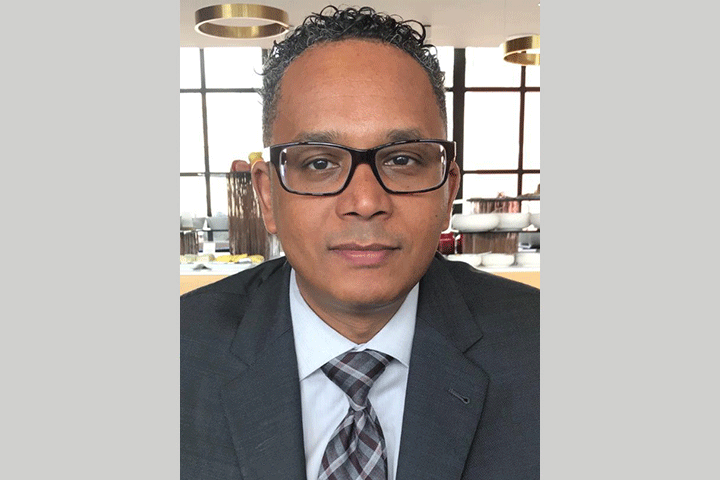The American Association for Cancer Research (AACR) Virtual Special Conference: Pancreatic Cancer Day Two

On Day Two, the American Association for Cancer Research (AACR) Virtual Special Conference: Pancreatic Cancer continued its close look at the latest in pancreatic cancer research.
This time the focus was on metabolism and RAS signaling, the tumor microenvironment, and the great mouse debate. Here are the highlights from Day Two.
Using an Integrative Molecular Epidemiology Approach to Battle Pancreatic Cancer in the Era of Precision Medicine: Hope Is on the Horizon
Precision medicine takes into account individual variability in genes, environment, and lifestyle, allowing doctors to predict more accurately which treatment and prevention strategies for a particular disease will work in which groups of people. Pancreatic cancer is a heterogeneous disease, and tailoring treatment to an individual is a high-priority goal. The Day Two Keynote Lecture was moderated by Jen Jen Yeh, M.D. (University of North Carolina, Chapel Hill).
Jennifer B. Permuth, Ph.D., of the Moffitt Cancer Center in Tampa, Florida, spoke about how precision medicine may be of benefit to pancreatic cancer patients. One key is to use an integrative molecular epidemiology approach to better understand who is at risk for progression from pancreatic cysts to pancreatic cancer. And it is also vital to understand the racial disparities in pancreatic cancer.
Integrative molecular epidemiology is about bringing together epidemiology, data science, and basic science to better understand disease. Using clinical and basic data, scientists are developing clinical decision tools to aid in IPMN stratification, for example. IPMN is an acronym for intraductal papillary mucinous neoplasm. It’s a type of cyst found in the pancreas. These cysts are benign; however, in a minority of cases an IPMN can develop into a malignant tumor. These IPMNs can be assigned risk by using a combination of miRNA biomarkers detected in the blood, radiomics data, and genomics information. This approach is currently being developed under the Florida Pancreas Collaborative.
Pancreatic cancer racial disparities in Florida mimic the rest of the country, with higher incidence and worse outcomes among African Americans. Currently, the Florida Pancreas Collaborative has expanded to 15 sites, including academic sites and community hospitals. The group is studying a patient cohort of 500 participants across all 15 sites and assembling clinical data and biosamples to help uncover the drivers of racial disparities. The cohort is 12 percent Black, 16 percent Hispanic, and 72 percent non-Hispanic White. The team is also beginning to use the biobank to ask questions about why cachexia impacts African American patients more severely and what can be done to improve treatment.
Session 3: Metabolism and RAS Signaling
Pancreatic cancer’s biology is unique. The malignant cells of pancreatic cancer are able to alter the metabolism, finding ways to survive and spread in nutrient-poor conditions. Scientists are studying the metabolism of pancreatic cancer to better understand this biology with a goal of identifying new potential therapeutic targets to slow pancreatic cancer growth and metastasis. The session was moderated by Andrew M. Lowy, M.D., University of California San Diego, La Jolla.
Session Keynote: Metabolic stress in pancreatic cancer progression and therapy: In his lab, Cosimo Commisso, Ph.D., Sanford Burnham Prebys Medical Discovery Institute (San Diego, California) and his team are studying pancreatic cancer cells and their uniquely high requirement for the amino acid glutamate. By living in a glutamate-poor environment, these cells undergo metabolic stress which can lead to epithelial to mesenchymal transition (EMT)—the first step in becoming metastatic. The team is unravelling the pathway linking metabolic stress and EMT and finding new therapeutic targets.
Kdm6 demethylases are critical regulators of pancreatic cancer initiation, progression and subtype specification: Ph.D. candidate Laura Leonhardt (University of California San Francisco) spoke about understanding the role of specific epigenetic changes that enable pancreatic cancer initiation and progression.
Targeting the sterol regulatory element-binding protein pathway in pancreatic ductal adenocarcinoma: Post-doctoral fellow Stephanie Myers, D.V.M. (Johns Hopkins University, Baltimore, Maryland) focused her talk on pancreatic cancer cells’ demand for lipids. These malignant cells manage to survive despite living in a lipid-poor environment. The research team here is investigating the role of lipid homeostasis pathways, which has already revealed a highly active sterol response pathway (SREBP) necessary for growth. Using lipid-lowering drugs (statins) and anti-clotting drugs (dipyridamole) could show slowed tumor growth and improved outcomes in mice, which could suggest targeting SREBP as a valid approach for treating pancreatic cancer.
Collateral amplification of the KRAS linked gene PTHLH governs pancreatic cancer growth and metastasis and reveals a new therapeutic vulnerability: The gene for parathyroid hormone-related protein (PTHrP) is adjacent to KRAS and often co-amplified with KRAS. According to Jason R. Pitarresi, Ph.D. (University of Pennsylvania, Philadelphia), the team has shown that amplification of PTHrP leads to increased metastasis, and that blocking PTHrP in mice either genetically or with an antibody slows metastasis. This finding suggests a new pathway to block metastases in pancreatic cancer patients.
Session 4: Tumor Microenvironment
The tumor microenvironment of pancreatic tumors is both heterogeneous and unique and contributes to tumor growth, invasion, metastasis, and immune evasion. The cells in the tumor microenvironment provide the nutrients and protection that allow pancreatic tumors to grow and evade destruction. These teams are researching approaches to better understand the source of these cells and looking at ways to develop therapies that will disrupt their function and make pancreatic tumors more vulnerable. The session was moderated by Marina Pasca Di Magliano, Ph.D., University of Michigan Medical School, Ann Arbor.
Hedgehog represses angiogenesis in PDAC through a paracrine cascade mediated by Wif1: Post-doctoral research fellow Marie C. Hasselluhn, Ph.D., and a team at Columbia University (New York) are using a novel tumor explant system to look in 3D at how tumors interact with the tumor microenvironment. They are investigating the role of the hedgehog pathway in regulating angiogenesis, and their research has already revealed a potential new target in the Hh pathway to control angiogenesis.
Cancer-associated fibroblasts sustain critical dependency of pancreatic cancer cells on exogenous lipids: Cancer-associated fibroblasts (CAFs) provide nutrients and protection to pancreatic tumors. Charline Ogier, Ph.D. and the Fox Chase Cancer Center team (Philadelphia, Pennsylvania) have developed a novel cell culture model to allow CRISPR screening to identify targets in CAFs. They have identified a cell surface protein on CAFs (TMEM16) that has clinically available targeted drugs. When this protein is disrupted, cell death occurs.
Debate: The KPC Model Has Helped to Advance Pancreatic Cancer Therapy: Agree or Disagree?
Kenneth P. Olive, Ph.D., is an associate professor in the department of medicine and director of the Oncology Precision Therapeutics and Imaging Core (OPTIC) Shared Resource. The core of his laboratory is based on a preclinical trials infrastructure called the “Mouse Hospital.” This effort seeks to treat mice with pancreatic cancer in exactly the same manner that human patients are treated. Associate Professor Phoebe Phillips is a National Health and Medical Research Council Fellow, and leader of the Pancreatic Cancer Translational Research Group at the University of New South Wales, Sydney, Australia.
The debate, moderated by Anirban Maitra, M.B.B.S. (University of Texas MD Anderson Cancer Center, Houston, Texas), centered on the utility of the KPC mouse in today’s research environment.
The KPC mouse has proven itself time and again in “advancing promising biology-based regimens to the clinic and of dissuading the further clinical development of ineffective regimens,” Dr. Olive said. Today, it remains an important tool in ongoing research and is “bolstered by ongoing co-clinical efforts that iteratively pass from human to mouse and back again.”
Associate Professor Phillips argued that “the KPC model, while a useful tool to understand pancreatic cancer biology in the laboratory, has had limited clinical impact due to key differences in mouse and human cell biology as well as inherent limitations of the model.” The future is in patient-derived 3D tumor models of pancreatic ductal adenocarcinoma, “which have potential to overcome many limitations associated with the KPC model.”
On that note, we will leave you to decide. Stay tuned to Let’s Win for more in-depth coverage of several presentations from this two-day event. And don’t forget to read the highlights from Day One.






